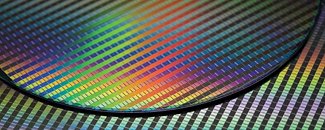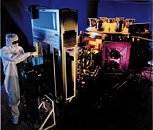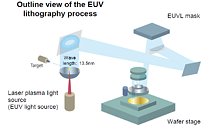Tuesday, September 4th 2018

Analyst Firm Susquehanna: "Intel Lost its Manufacturing Leadership"
Intel was once the shining star in the semiconductor manufacturing industry, with a perfectly integrated, vertical product design and manufacturing scheme. Intel was one of the few companies in the world to be able to both develop its architectures and gear their manufacturing facilities to their design characteristics, ensuring a perfect marriage of design and manufacturing. However, not all is rosy on that field, as we've seen; AMD itself also was a fully integrated company, but decided to spin-off its manufacturing arm so as to survive - thus creating GLOBALFOUNDRIES.But Intel was seen as many as the leader in semiconductor manufacturing, always at the cutting edge of - well - Moore's Law, named after Intel's founding father Gordon Moore. Now, Mehdi Hosseini, an analyst with Susquehanna, has gone on to say that the blue giant has effectively lost its semiconductor leadership. And it has, in a way, even if its 10 nm (which is in development hell, so to speak) is technically more advanced than some 7 nm implementations waiting to be delivered to market by its competitors. However, there's one area where Intel will stop being able to claim leadership: manufacturing techniques involving EUV (Extreme UltraViolet).It's being reported that intel has decided to postpone its EUV efforts to other processes, not taking it up on its 7 nm process development. This saves Intel money in adding yet another technique and technology to an already hard to manufacture node, but leaves the door ajar for the likes of TSMC and Samsung (of which the latter is expected to have the more complex EUV implementation, in more layers, at least in the beginning). TSMC is looking to develop both 7 nm and 7 nm+ manufacturing processes, where only the latter will feature EUV integration - a way to divide costs and reduce reliance on a still exotic technology. But while Samsung and TSMC are both looking towards some level of EUV integration by 2019, intel is looking towards a farther 2021.According to Susquehanna's Mehdi Hosseini, TSMC is the company to look out for as the semiconductor manufacturer leader, as it "appears to be winning most of the leading-edge design wins due to better 7nm process technology performance, lower power consumption and better area density." Indeed "the times, they are a changin'."
Source:
EETimes



61 Comments on Analyst Firm Susquehanna: "Intel Lost its Manufacturing Leadership"
It's also part of the reason why power draw, scales in an unfavourable way with the current Zen+ CPUs.
Again it's not the pitch, but the chosen process in combination with the architecture.
The focus on just this one value is misguided and of no relevance since 3D-gates / fin-fet manufacturing came around.
Sandy Bridge on a 32nm node could readily do 5.5GHz with air cooling and some even 5.7GHz with just liquid cooling. Years later, even CFL-S CPUs at 14nm cannot reach those frequencies with that sort of cooling, but will go farther with liquid nitrogen and helium than SB ever could.
It's best to wait and see what Zen 2 actually brings forth rather than hoping it'll just hit some random frequency. It's hard to know with so little data and info on the public (our) side.
Ryzen at 12nm can barely break 4.2 on average. Some are even stuck at 4.1ish using 2nd gen Ryzen.
I guess you don't know much about high fps gaming when using FX6300 and a 1080p TV... You're a budget gamer; Ryzen will be fine for you.